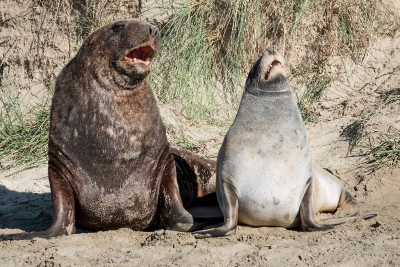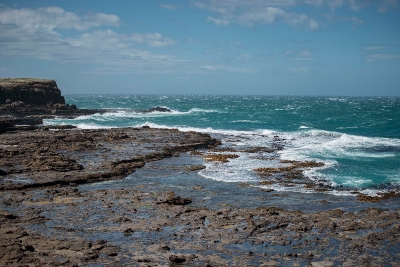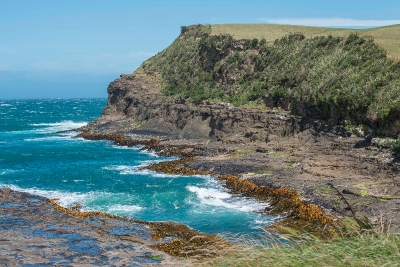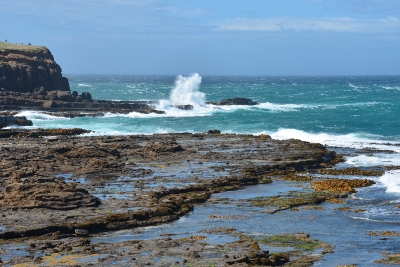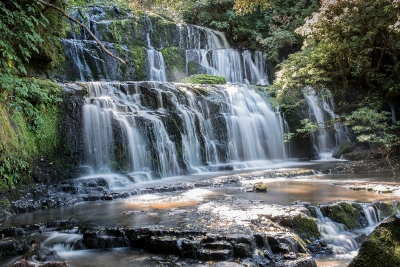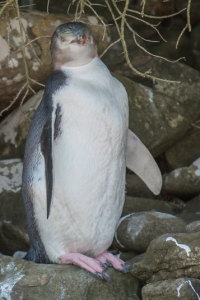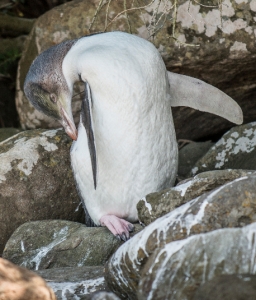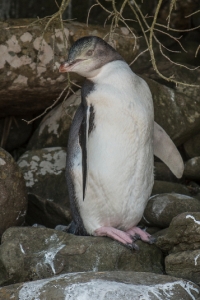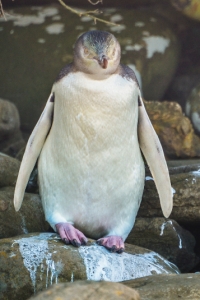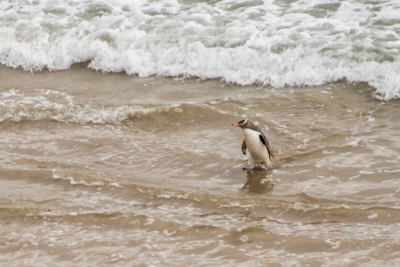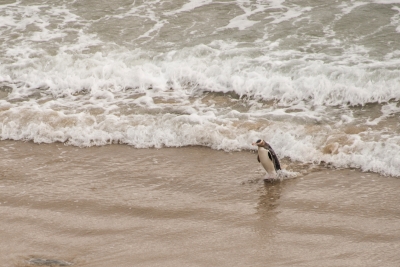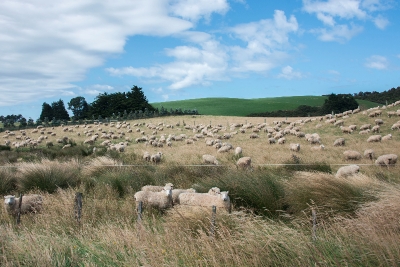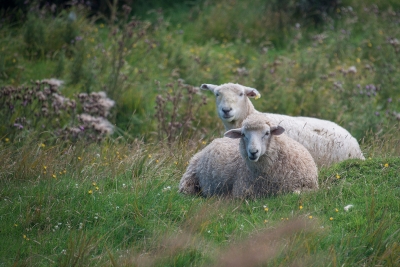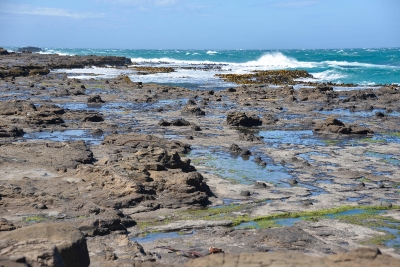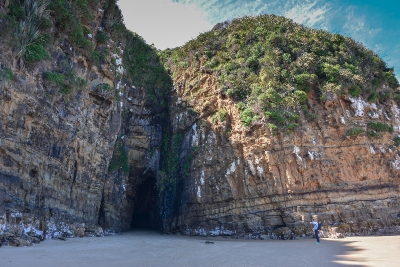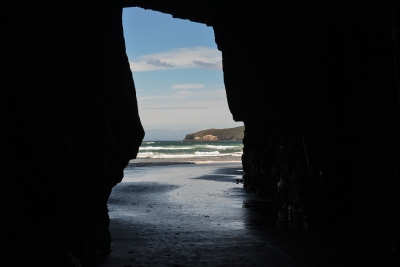We drove from Te Anau to Owaka. This route, 8 hours including stops, took us through the most southern part of the South Island and up the south eastern coast and through Catlins Conservation and Forest Parks. The Catlins – the name that conjures up images of a corner of New Zealand untainted by the modern world – a place where time has stood still and a visitor may enjoy forest, wildlife and the life-style of a bygone era. This image is a true reflection. Accidents of history have favored protection of the Catlins and it still retains many accessible wildlife havens in its varied hill and scenic coast.
Coastal Catlins – Here, close to the rich Sub-Antarctic feeding grounds, are some of the world’s rarest marine animals – Penguins (including the worlds rarest penguin, Yellow-Eye Penguin), Hooker’s Sea Lions, as well as New Zealand Fur Seals. The scenery Rocky platforms carved by the sea, secret coves and sweeping beaches of gleaming, wave-combed sand are all part of the exhilarating variety of coastal scenery. Our stops included Curio Bay and Nugget Point to view the Yellow Eyed Penguins; Purakaunui Falls a cascading multi-tiered waterfall on the Purakaunui River; Cannibal Bay to see sea lions, and finally a walk through Cathedral Caves.
The cathedral caves stand statuesque, and barnacled awash one moment with the tide and the next travelers are wandering down the beach marveling at its lofty ceilings and view to the ocean and islands beyond. The petrified forest of Curio bay bares a stone kingdom of logs laying entrenched where they have rested for 170 million years.
Cannibal Bay, is home to sea lion colonies. The sea lions lay on the beach gathering in the suns warmth. Sensing we are in their space, they toss back their head, focus on us, and roar! They glide on the sand moving toward you on all fours, nearly a half ton in weight. Being smart humans, we run in the opposite direction, till we turn around and snap pictures once again.
Views are gained over rocky headlands, sandy bays and bush fringed estuaries. There are many short forest walks to beaches, streams, lakes, waterfalls, caves or blow holes.

